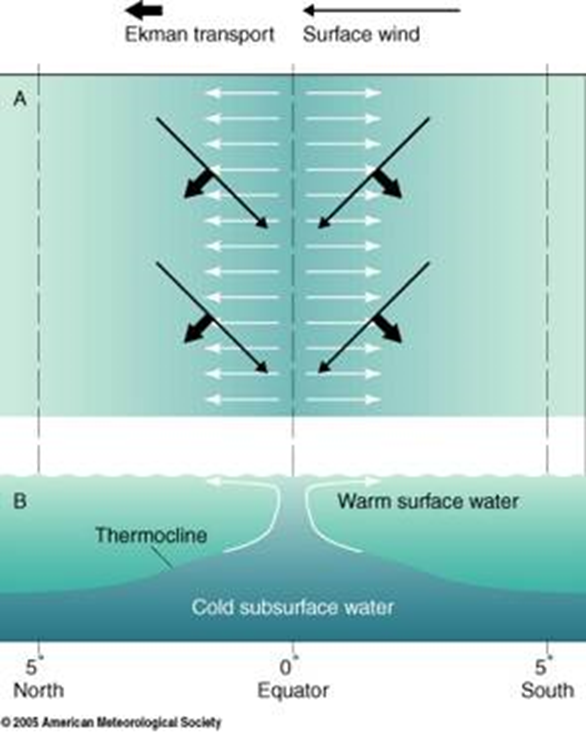Wind-Induced Vertical Circulation
The horizontal movement of water can induce vertical movement in surface waters. This is called wind-induced vertical circulation. There are two types:
- Upwelling
- Downwelling
Diverging surface seawater
 |
As the wind blows, it moves the water beneath it to the right (left in the southern hemisphere). The surface seawater moves away, and deeper seawater replaces the diverging surface water. This creates a current called Upwelling. These areas tend to have high biological productivity. This condition is very common at the equator as the trade winds move towards the equator before rising up to form the Hadley Cell. This causes the water to move away (diverge) from the equator and creates the upwelling current. This is the reason why there is a high concentration of siliceous oozes on the sea floor in the equatorial regions. The cold-loving diatoms concentrate in the cold, nutrient rich waters brought to this area by the near-permanent upwelling conditions present at the equator. |
Converging surface seawater
Sometimes the winds push the surface seawater towards an central area. The surface seawater piles up and is pushed downward. This creates a downwelling current. These areas often have low biological productivity.
Coastal Upwelling and Downwelling
| When the wind blows either parallel to the shore to the south or offshore → coastal upwelling | When the wind blows either towards the shore to parallel the shore to the north → coastal downwelling |
 |
 |
 |
| From NASA's Earth Observatory: Along the coast of Namibia, easterly winds push surface waters offshore and promote upwelling near the coast. Studies have described how bacteria in oxygen-depleted bottom waters off Namibia consume organic matter and produce prodigious amounts of hydrogen sulfide. As the gas bubbles up into more oxygen-rich water, the sulfur precipitates out and floats near the surface. |
><< back |
||
